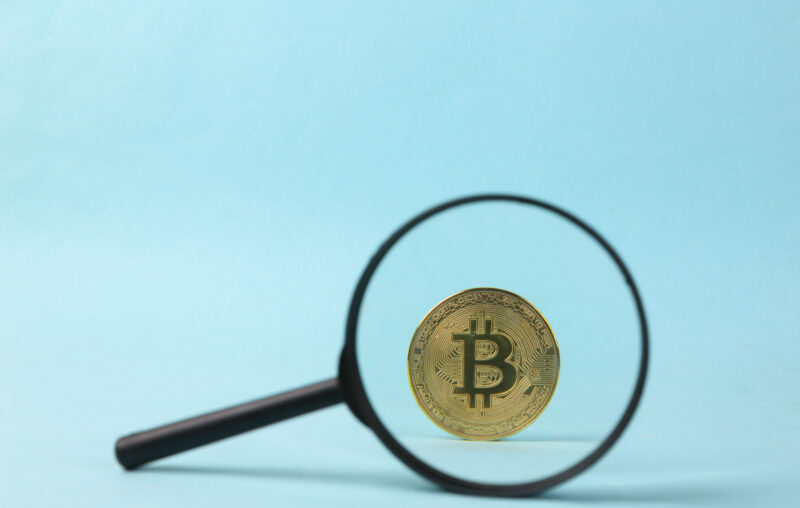The Future of Bitcoin in Light of a Spot ETF

On January 10, over a decade after the first Bitcoin spot Exchange-Traded Fund (ETF) application, the Securities and Exchange Commission (SEC) finally approved eleven applications on the same day. Trading began the next day, January 11. The recent round of approvals comes after much anticipation. The first-ever application for a Bitcoin spot ETF was back in 2013, from Gemini, a company co-founded by the Winklevoss brothers. The SEC rejected Gemini’s application in 2017 as well as subsequent application from the same company again in 2018.
Exchange-Traded Funds allow investors to gain exposure to Bitcoin’s price volatility without having to invest in Bitcoin directly. Note that the SEC usually refers to ETFs as ETPs (Exchange-Traded Products); ETFs are just one type of ETPs.
The general sentiment across the Bitcoin-sphere was one of excitement. Bitcoin Magazine called the SEC’s approval “a historic milestone in the evolution of Bitcoin adoption within traditional financial markets.” Investor Balaji Srinivasan called it “the spiritual reversal of Executive Order 6102” (referring to FDR’s 1935 seizure of America’s privately-held gold). For many, the SEC’s reluctant approval was seen as a bit of institutional validation for Bitcoin – especially after years of dismissal by the likes of establishment figures such as Warren Buffet, Jamie Dimon, and Elizabeth Warren.
Even in SEC Chair Gary Gensler’s public statement announcing the Bitcoin spot ETF approval, he warned that “bitcoin is primarily a speculative, volatile asset that’s also used for illicit activity including ransomware, money laundering, sanction evasion, and terrorist financing.” (Gensler conveniently overlooks that fiat currencies, including the US dollar, are also used for all of the above).
Gensler also noted that the SEC essentially had little choice but to approve the Bitcoin spot ETFs since “The US Court of Appeals for the District of Columbia held that the Commission failed to adequately explain its reasoning in disapproving the listing and trading of Grayscale’s proposed ETP…”
But a refreshing bit of sentiment came from SEC Commissioner Hester Peirce in a statement of her own. In the statement, Peirce accused the SEC of treating Bitcoin spot ETPs unequally to (more harshly than) other types of ETP applications over the years. As she put it, “The goalposts kept moving as the Commission slapped ‘DENIED’ on application after application.”
Commissioner Peirce’s full statement deserves a read, but the final paragraph in particular reflects what I think is a principled stance consistent with a free society:
I am not celebrating bitcoin or bitcoin-related products; what one regulator thinks about bitcoin is irrelevant. I am celebrating the right of American investors to express their thoughts on bitcoin by buying and selling spot bitcoin ETPs. And I am celebrating the perseverance of market participants in trying to bring to market a product they think investors want. I commend applicants’ decade-long persistence in the face of the Commission’s obstruction.
A personal perspective
Whether regulators that happen to be more hostile to Bitcoin (and “crypto” more generally) like it or not, the SEC’s Bitcoin spot ETF approval does provide a strong counter-narrative to the “Bitcoin is for drugs, money laundering” objection. The approval certainly has the potential to substantially increase Bitcoin’s purchasing power over time (which we can easily measure using its fiat-denominated price) as new institutional money flows into Bitcoin.
There are two things to watch for here, however: one regarding Bitcoin’s consensus and the other regarding self-custody.
1. Consensus
As Bitcoin has a highly-decentralized governance model, no single stakeholder or multiple colluding stakeholders (miners, full node operators, programmers, users, exchanges, wallet providers, payment processors) are able to change it to their own benefit without reaching an overall consensus from the others. Satoshi Nakamoto, Bitcoin’s creator, understood incentives and a bit of game theory.
As huge financial institutions increase their holdings (directly or indirectly) of Bitcoin over time, there is likely to be enormous pressure to bend Bitcoin’s rules towards, say, compliance with the US Treasury’s Office of Foreign Assets Control (OFAC) sanctions. (To understand the present regulatory climate, note that in 2022, OFAC began sanctioning crypto mining operations in Russia and even Ether wallet addresses alleged to be connected to North Korean hackers).
In Bitcoin, existing norms serve as a Schelling point: a consensus point where people converge without much coordination. As such, it isn’t difficult to imagine a so-called hardfork happening over competing visions of the Bitcoin protocol, resulting in a split into two separate coins, both calling themselves “Bitcoin” (this wouldn’t be the first time). The first “Bitcoin” would be regulator-friendly and institutionally backed. The second would be a permissionless, censorship-resistant, “OG” Bitcoin, as I will refer to it here for simplicity.
If such a split were to happen, we could imagine regulators in the United States and Europe, for example, forbidding cryptocurrency exchanges from facilitating trades of the “OG” Bitcoin that exists today. Additionally, miners of the “OG” Bitcoin could come under heavy attack for various reasons (with a green energy agenda, for example), pushing their operations to countries less politically aligned with the United States and Europe. (And, as a side note, this would even further complicate the American and European governments’ ability to sanction any country at will).
To be clear, none of these attacks on the free and open “OG” Bitcoin payment network would kill it. Far from it. But it does push its stakeholders to the fringes, legally speaking. Additionally, what Bitcoin’s political and regulatory enemies overlook is that the more they ramp up attacks against it using (sometimes) legally questionable and authoritarian means, the more they – quite ironically – increase the value proposition for a free and open payment network. That is, crackdowns against it create new demand for it. This is because people who find themselves living in authoritarian regimes seek out tools to maintain some element of human dignity.
2. Self-custody
As for self-custody, it is worth a quick revisit of what Satoshi originally had in mind. His whitepaper called Bitcoin a “Peer-to-Peer Electronic Cash System.” Peer-to-peer meant no centralized third-party custodians needed. In fact, getting away from centralized third-parties altogether was the key breakthrough that Bitcoin achieved after a couple of decades of Cypherpunk debates and previous attempts. (See my detailed table for more on this).
As David Waugh rightly noted, taking self-custody of Bitcoin yourself protects you against a government that “might be able to seize the asset manager’s bitcoin or order it to liquidate the ETF.”
Perhaps unsurprisingly, the US Treasury Department refers to self-custody (“non-custodial”) cryptocurrency wallets in a sort of derogatory manner, labeling them “unhosted wallets” – a name that implies that a legitimate way of doing payments (from Treasury’s point of view) is for cryptocurrency users to trust third parties (a “host”) that can be easily coerced by the regulatory apparatus to hand over user funds at will. But even if we dismiss the risk of a predatory state, the exchanges themselves can be unreliable, to say the least. Blockchain analytical service Glassnode noted that in the aftermath of the FTX collapse of November 2022, both institutional and retail users withdrew funds from centralized exchanges, en masse, resulting in significant net outflows, with users moving funds into self-custody. Self-custody radically protects property rights.
Final words
While the SEC’s long-overdue approval of a Bitcoin spot ETF deserves a bit of celebration, watch out for what’s next. The state apparatus will, for the most part, increasingly treat Bitcoin as a regulated financial product – something that BlackRock and the rest of Wall Street can profit from. As such, it is likely to turn even more hostile to the peer-to-peer open payment network concept that Satoshi envisioned. Nation-states remain jealous of Bitcoin’s competition with their inflationary monopoly money.










